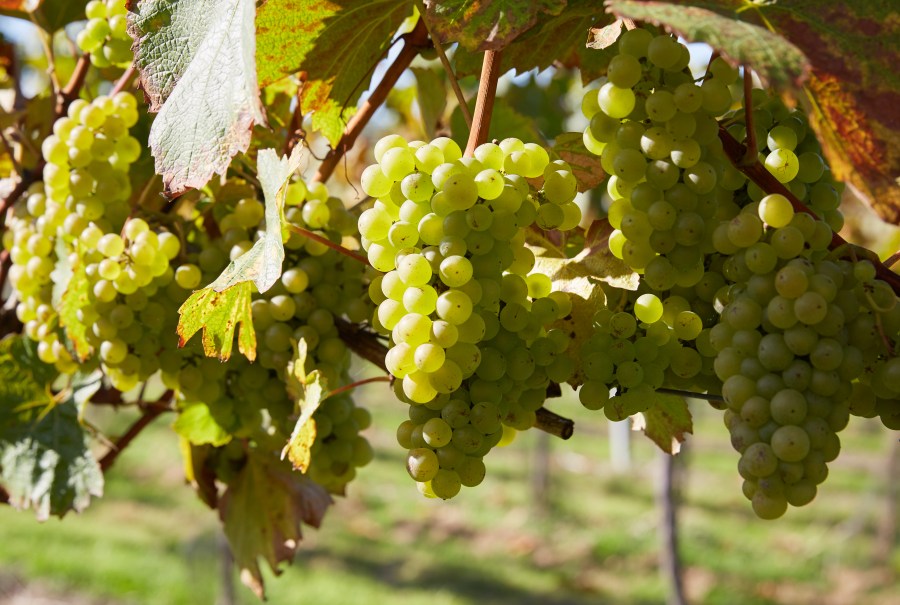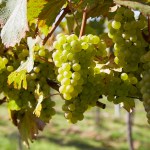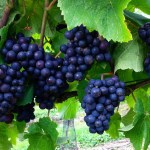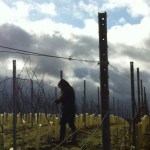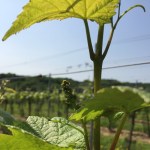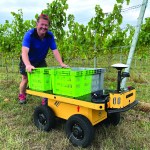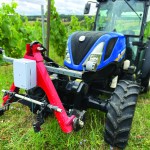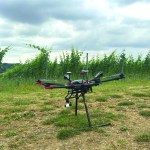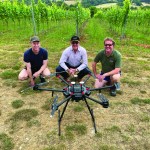After those darling buds of May (or thereabouts) have burst in your vineyard, the flowers will start to abscise and the new berries will go through a rapid period of development. New green shoots unfurl their leaves and photosynthesis begins in earnest. This means the plant can stop depending on the carbohydrates it stored in the previous season.
Managing your vines in the post-flowering period is crucial to grape quality and yield, not just in this season but also in the next. The hot topics are pruning and canopy management, but planning for pest and disease outbreaks as well as seasonal fertilisation is crucial at this time as the summer creeps towards us.
There is no such thing as a textbook season these days, with annual variations in weather being the main source of unpredictability. Moreover, in the longer term, there are warnings to consider – how will the changing climate affect life in the vineyard? Warmer temperatures in the growing season bring the vines’ growth cycle forward, but with it comes an increased risk from pests and disease pressures.
Pruning and rubbing out
Pruning is an important tool for maintaining vine health and productivity. Successful pruning requires attention to bud fertility, vine vigour and the potential exposure of the grapes to sunlight. Your pruning programme will help to control the size of the vine and prevent overgrowth, where the fruit could be shaded and fail to reach its full potential in terms of quality. By removing excess shoots and canes, the plant’s energy is directed towards the most productive shoots, ensuring the bunches receive the optimal exposure to sunlight.
Pruning also plays an important role in disease management. Removing damaged wood reduces the risk of infection and prevents the spread of diseases like botrytis. There is also a yield control aspect. By removing excess buds, the number of grape clusters each vine produces is controlled which can help ensure consistent and high-quality yields from season to season.
“Size matters – the advantage of smaller vineyards lies in the time and focus that can be spent on pruning and bud management,” said co-owner of Fox & Fox at Mayfield in East Sussex, Jonica Fox. “It’s a luxury and workload we value. With a mix of older vines (20 years next year) and recently planted (2021/22) we have two goals:
“For the new vines, it’s all about gentle pruning and bud removal to balance top growth so that we help the vines develop strong roots until they are fully established and cropping well. For the mature vines, everything we do is driven by ‘how good will the wines be’ – pruning to renew heads when needed but more often pruning to keep an open cane architecture, deliver a good crop and ensure wood ripening and productive buds for the following year.”
“We prune to slightly longer canes than we need, with kickers to mitigate frost risks. Once that risk is past, we rely on shoot selection to keep the fruit load within the vine’s capacity to support a healthy crop. Spending the time at the start of the season pays off; it’s all about delivering delicious fruit.”
This laser focus certainly appears to be paying dividends for sparkling wine producers Fox & Fox. To date, every wine they have released has won at least one gold medal over a spread of national and international competitions.
Canopy management
Alongside pruning and shoot thinning, leaf removal can also play an important role in vineyard management at this time of year. The leaf area index is a measurement of the total area of leaves per unit of ground area in a canopy. This important parameter is used in agronomy as a measure of the amount of photosynthetically active surface area available to the plant for taking in light, photosynthesis and transpiration.
The index is usually expressed as a dimensionless index, representing the ratio of total leaf area to the area of ground covered by the canopy. Although the optimum ratio varies slightly between cultivars, there seems to be a general consensus in the research that a rate of 1.5-2 is the golden zone – that is where the total area of leaves in the canopy is one and a half to twice the area of the ground covered by that canopy.
Leaf removal doesn’t just give the berries access to more light; it also improves air circulation and alleviates disease pressure. However, the timing and extent of the removal need to be carefully managed so that young grapes are not exposed to additional risks from late frosts at the beginning of the season or sunburn and dehydration as the summer progresses.
A study in the 2018-19 growing season in Bolgheri, Italy examined the effects of basal leaf removal on Cabernet Sauvignon vine physiology, berry temperature and grape quality. This research suggested that moderate leaf removal encouraged higher photosynthesis levels in the remaining leaves and produced berries with higher sugar content.
Fertilisation
After flowering, vines require nutrients to develop and ripen their fruit. “It is true that apart from losing crops to disease; the two limiting factors for yield are loss from frost damage and disappointing temperatures over the flowering period (‘Wimbledon weather factor’) and set” said agronomist at Agrii Julian Searle. “The fact is that the UK climate is still marginal for sustainable yield. The status of a few key nutrients for flowering fruit crops can make a difference and vines are no exception. Current research backs up known understanding – the importance of good levels of zinc, boron, nitrogen and calcium going into flowering and also during the period for next year’s floral bud initiation, soon after flowering.”
Nitrogen is necessary to support shoot growth and fruit development. High levels of calcium in the fruit will give the berries a firmer flesh and reduce bunch shatter. Micronutrients like zinc and boron are also vital for the development of healthy, flavourful grapes.
Mineral nutrition also helps to protect plants from environmental stress. They have physiological functions which help the plants to enhance their tolerance to an excess of heat or light, or drought conditions, for example, maintaining the stability of the yield under stressful conditions. However, Julian stressed nutrition is a big subject and the importance of some basic principles such as Liebeg’s Law of the Minimum; ensuring application of nutrients in a way that none becomes a limiting factor for optimal crop development.
The role of bio-stimulants is under research. “This is a huge subject area,” Julian explained, “but in particular amino acids, e.g. Physiocrop or Zonda, are being examined for their role in assisting quality and yield although this is not yet fully understood. Related materials such as peptides in ProAct are also being investigated. We are noting benefits from a combination of the two in the field though it is not fully quantified yet.” Agrii’s Vineyard Toolkit has unpacked the current state of knowledge and considers how a nutrient programme may be designed – see
www.agrii.co.uk for tools and resources.
For the more adventurous or technologically inclined, remote sensing equipment like drones and satellites can be used to collect data on vineyard health and grape ripeness. In turn, this will inform vineyard management practices like fertilisation. Drones can give an incredibly detailed perspective, while satellite imaging is more broad brush. The data from these sources can help to pinpoint areas that need a nutrient boost, troubleshooting specific issues in a quick, cost-effective way – after the initial outlay of course.
JoJo’s Vineyard in the Chiltern Hills near Henley on Thames tags itself as ‘The Digital Vineyard’. They are just beginning their drone journey.
“We’ll be using robots and drones during the year to help understand if and how technology can play a practical role in vineyard management,” explains Ian Beecher-Jones, co-founder of JoJo’s. “We will be using the Triple A approach (acquire, analyse, apply), of acquiring data through a range of sensors, analysing that data to understand what it can and should be telling us and then most importantly how we can apply any remedial action practically in the vineyard. We’ll be looking at bunch counting and yield forecasting in the first instance, and comparing that information to our soil type, canopy density and vine health during the year. Crate-by-crate yield mapping at harvest will provide high-resolution feedback on what has happened during the season. We will compare this to our yield prediction models on a granular scale.”
Pest and disease management
Effective management of diseases and pests is critical to maintaining vineyard health and maximizing yield. Increasingly, vineyard managers are searching for integrated pest management strategies that minimize the use of pesticides and fungicides. So what options are available to you if you want to reduce your use of chemicals?
Pests
Animal and insect pests become particular nuisances when grapes are beginning to form and ripen. Unfortunately, some of our most common British birds turn into determined thieves when grapes are on offer! Blackbirds, starlings, thrushes and more will try to get in on the action. Netting, visual deterrents and audio bird scarers can all be employed to discourage them.
The easy availability of fruit sugars attracts a host of insect pests. Wasps are perhaps the most obvious culprit, damaging grapes by puncturing their skins to feed off the juice. Vineyard managers can use traps and bait stations to control wasp populations. A less common pest in the UK, but still to be found in the south east of England and South Wales, is the grapevine moth. Their larvae cause damage by feeding on the berries. Pheromone traps may be employed to monitor their populations.
Diseases
In the post-flowering period, grapevines are susceptible to a range of diseases that can significantly impact fruit quality and overall vine health. Fungicides are the go-to remedy for these problems, and arguably the most effective solution, but there are alternatives for managing them without chemicals.
- Powdery mildew is a fungal disease that typically presents as a powdery white coating on the leaves. It can reduce levels of photosynthesis, stunt growth and affect fruit quality, causing off flavours in wine. Certain grape varieties may be more or less susceptible to infection; piwi varieties have been specifically crossed with disease tolerance in mind.
– Exposure to natural sunlight and good air movement can stop the disease from establishing. Organic growers may use sulphur as a preventative spray throughout the growing season and potassium bicarbonate as a cleaner. - Botrytis is another fungus that strikes most vehemently in humid and wet conditions. It appears as grey mould on the berries leading to a reduced yield and poor fruit quality.
– To prevent the likelihood of a botrytis infection, canopy management is key so that air circulation is optimised. Feeding to avoid a boron deficiency can help the vine to produce strong pollen tubes on its flowers, a key entry point for a Botrytis infection in wet conditions. - Downy mildew appears as yellow or brown leaf spots, leading to leaf drop along with a reduced yield of poor-quality fruit.
- Prevention is key, maintaining good vineyard hygiene and monitoring vines carefully for signs of infection. Most of the work to reduce the risk of downy mildew taking hold is therefore undertaken through vineyard hygiene practices in the autumn and winter, but at this point foliar nutrition of copper, zinc, sulphur and phosphorus can also help to trigger the plants’ natural defence mechanism.
- Phomopsis cane and leaf spot presents as small black spots on the leaves and canes, as the name suggests. It can impact on fruit quality and yield if left untreated.
– Pruning infected canes can help to prevent further spread of the disease, as can removing plant matter from the ground to keep the undervine area clean.
Current research is focusing on the use of various biopesticides in a bid to move away from traditional pesticides. Bacillus-based products and other microbial agents are being investigated for controlling common grapevine diseases such as downy mildew and Botrytis.
Weeds
Weed growth puts pressure on the supply of water and nutrients to the vines. Even though UK vineyards are not short on water and quite often have fertile soils, research by the NIAB-EMR plant research centre at East Malling in Kent has indicated that vines do still experience reduced vigour and yield where weeds are left completely unchecked.
Weeding is easily one of the biggest ongoing challenges that irk vineyard managers across the country. Weeds and cover crops grow continuously in our climate without the period of dieback over the summer that our European neighbours in warmer countries enjoy.
An entirely weed-free vineyard with bare soil is only really achievable through the use of herbicides. This leaves the soil vulnerable to erosion and the chemicals themselves are detrimental to soil health. Alternative options are mainly centred around mechanical weeding, which may be tractor mounted or rather more manual in nature, depending on the size of the vineyard and available budget!
Mowing will of course keep weeds and cover crops under control, and it is relatively quick to implement. As the weeds’ roots are unaffected, it is just a temporary solution. Weeding the inter-vine areas also requires more specialist equipment to take the weeds back to ground level without disturbing or damaging the trunks and roots of the grapevines themselves.
Mulching inhibits weed growth and can be made from a range of organic materials like green waste or wood chips. The mulch layer has to be sufficiently thick to be effective, meaning that spreading it can be time-consuming and costly, depending on the size of the vineyard in question.
- Chardonnay at Fox & Fox
- Pinot Noir at Fox & Fox
- Fox & Fox
- Winter pruning
- The third cluster
- JoJo’s is a self professed ‘digital vineyard’, testing how new technologies can benefit winegrowers
- The team at JoJo’s in Henley-on-Thames prepare to trial drones to monitor their vines

